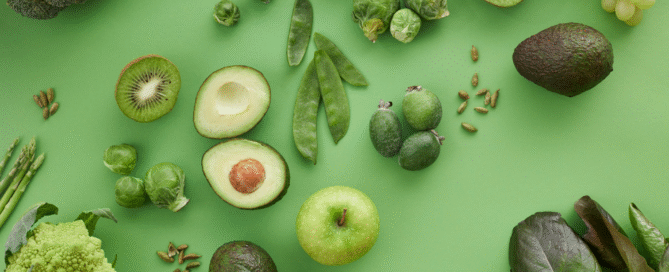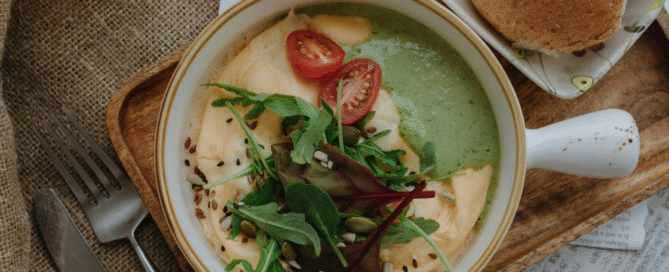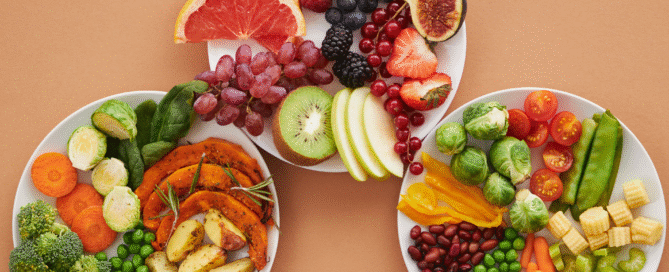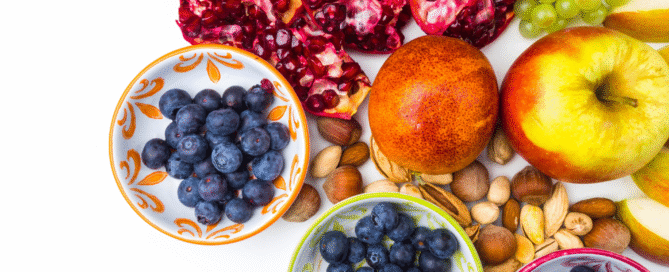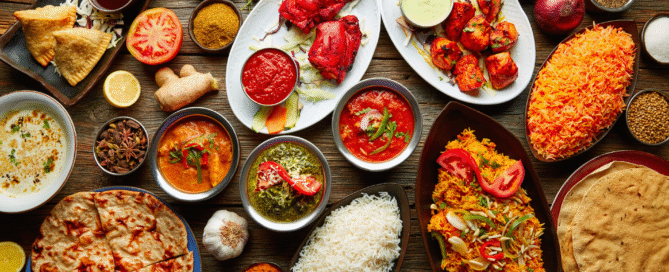Best Vitamins and Minerals for Daily Wellness: Essential Nutrients for Optimal Health
Maintaining daily wellness is a goal for many, and nutrition plays a crucial role in achieving it. The best vitamins and minerals for daily wellness can significantly boost energy levels, support immune function, and enhance overall health. Understanding which nutrients to prioritize can help individuals make more informed choices about their diets.
Incorporating a variety of vitamins and minerals into meals can promote balance and vitality. Essential vitamins such as A, C, D, and the B-complex group work together to ensure that the body operates efficiently. Similarly, minerals like magnesium, calcium, and zinc contribute to vital processes, from bone health to metabolic function.
Paying attention to these nutrients helps in creating a foundation for better health. Leveraging the benefits of vitamins and minerals not only supports physical well-being but also contributes to mental clarity and emotional resilience.
Key Vitamins and Minerals for Daily Wellness
Daily wellness relies on a balance of vitamins and minerals that support various bodily functions. Key nutrients such as Vitamin D, Vitamin C, magnesium, and potassium play crucial roles in maintaining health and enhancing overall vitality.
The Essential Role of Vitamin D
Vitamin D is vital for calcium absorption, which is essential for bone health. It also plays a role in immune function, aiding in the body’s defense against illnesses.
Sources include sunlight, fatty fish, fortified dairy products, and supplements.
Deficiency in Vitamin D can lead to weak bones and increased susceptibility to infections. For many, especially those with limited sun exposure, a daily supplement may be necessary to meet recommended levels.
Benefits of Vitamin C in Your Routine
Vitamin C is a powerful antioxidant that supports the immune system. It helps protect cells from damage and enhances the absorption of iron from plant-based foods.
Fruits such as oranges, strawberries, kiwi, and vegetables like bell peppers and broccoli are excellent sources.
Regular intake of Vitamin C contributes to skin health and collagen production, which is important for wound healing.
A sufficient daily intake can aid in reducing the duration and severity of colds.
Magnesium and Potassium: Vital Electrolytes
Magnesium plays a key role in energy production, muscle function, and nerve transmission. It is found in foods like nuts, seeds, whole grains, and leafy green vegetables.
Potassium is crucial for maintaining proper fluid balance, muscle contractions, and nerve signaling. Sources of potassium include bananas, sweet potatoes, and spinach.
Both minerals work together to regulate blood pressure and support cardiovascular health. Ensuring adequate levels of magnesium and potassium is essential for overall wellness and preventing deficiencies.
Daily Benefits and Sources of Key Nutrients
Key nutrients play a vital role in maintaining wellness through their effects on energy levels, bone health, immunity, and gut function. This section highlights essential vitamins and minerals, their sources, and their contributions to daily health.
Iron and Folate for Energy and Vitality
Iron is crucial for transporting oxygen in the blood, while folate supports red blood cell production. Deficiencies in these nutrients can lead to fatigue and weakness.
Sources of Iron:
- Red meat
- Poultry
- Lentils
- Spinach
- Fortified cereals
Sources of Folate:
- Leafy greens
- Beans
- Citrus fruits
- Whole grains
For optimal absorption, combining iron-rich foods with vitamin C sources, such as oranges or bell peppers, is beneficial. A balanced diet including these foods can help individuals maintain energy and vitality.
Importance of Calcium and Vitamin K for Bone Health
Calcium is essential for bone structure, while vitamin K supports bone mineralization and helps prevent fractures. Inadequate intake can lead to osteopenia or osteoporosis.
Sources of Calcium:
- Dairy products (milk, cheese, yogurt)
- Leafy greens (kale, bok choy)
- Fortified plant-based milk
Sources of Vitamin K:
- Kale
- Brussels sprouts
- Broccoli
- Fermented foods (natto)
Incorporating these nutrients into the diet is vital for maintaining bone density and overall skeletal health. Regular intake can help strengthen bones and reduce the risk of injury.
The Value of Zinc and Probiotics for Immunity and Gut Health
Zinc supports the immune system and contributes to normal cellular metabolism. Probiotics enhance gut health by promoting a balanced microbiome, which is essential for overall wellness.
Sources of Zinc:
- Oysters
- Red meat
- Poultry
- Beans
- Nuts and seeds
Sources of Probiotics:
- Yogurt
- Kefir
- Sauerkraut
- Miso
Adequate zinc intake helps the body combat infections, while probiotics support digestive health. Together, they strengthen the immune system and aid in nutrient absorption, promoting better health outcomes.
Choosing and Using Multivitamins and Supplements Wisely
When selecting multivitamins and supplements, individuals should understand their specific nutritional needs, the type of product that meets those needs, and how to incorporate these supplements into their daily routines effectively. The following points will clarify these important considerations.
Multivitamins vs. Single-Nutrient Supplements
Multivitamins are designed to provide a broad range of essential vitamins and minerals in one dose. They are often beneficial for individuals who have dietary gaps or varied nutritional needs.
Single-nutrient supplements focus on one specific vitamin or mineral. These may be ideal for those with specific deficiencies or health conditions that require targeted treatment. For instance, someone diagnosed with vitamin D deficiency might need a dedicated vitamin D supplement.
It’s crucial to assess one’s health status and dietary habits before deciding between these options. Consulting with a healthcare professional can help identify the most suitable choice based on individual circumstances.
Gummies, Tablets, and Other Supplement Forms
Multivitamins and supplements come in various forms, including gummies, tablets, capsules, and powders. Each form offers distinct advantages and considerations.
Gummies are popular for their taste and ease of consumption, particularly appealing to children and those who dislike swallowing pills. However, they often contain added sugars and may have lower concentrations of active ingredients compared to other forms.
Tablets and capsules typically deliver higher doses without the added sugars. Powders can be mixed with beverages, providing flexibility in intake. Individuals should choose the form that aligns with their personal preferences and lifestyle, ensuring consistency in their supplement routine.
Considering Special Dietary Needs: Kids, Teens, and Vegetarians
Dietary requirements can vary significantly based on age and lifestyle choices. Children and teenagers have unique nutritional needs for growth and development. Pediatric multivitamins are formulated to meet these needs while ensuring safety and efficacy.
Vegetarians may lack certain nutrients typically obtained from animal products, such as vitamin B12, iron, and omega-3 fatty acids. Plant-based supplements can help bridge these gaps, ensuring a balanced intake.
It’s essential to review nutritional guidelines and consult with healthcare professionals when choosing supplements for specific dietary groups. Tailoring supplement choices to individual needs promotes better health outcomes.
Safety, Risks, and Best Practices
Maintaining safety when taking vitamins and minerals is essential for wellness. Awareness of fat-soluble vitamin toxicity and community-driven insights can guide individuals toward responsible supplementation.
Managing Fat-Soluble Vitamins and Potential Toxicity
Fat-soluble vitamins, like Vitamin A, are stored in the body’s fatty tissues. This characteristic means they can accumulate to toxic levels if consumed excessively.
- Sources of Vitamin A: Found in foods such as liver, fish oils, and fortified cereals.
- Toxicity Symptoms: Can include nausea, dizziness, and even liver damage in severe cases.
Daily intake should be monitored. Adults typically need 2,300 to 3,000 IU of Vitamin A. Supplements should be considered only when dietary intake is insufficient, and it’s crucial to consult a healthcare provider before starting high-dose supplements.
Community Insights and Staying Updated on Wellness
Engaging with community resources can enhance knowledge about vitamin and mineral safety. Online forums often discuss personal experiences and share advice on supplements and food choices.
- Seek Reliable Information: Use reputable websites and official health guidelines to stay informed about safety recommendations.
- Balance and Diversity: A diet rich in whole foods may provide the necessary nutrients without the risks linked to supplement overuse.
Listening to shared experiences can help individuals make informed decisions while addressing their specific wellness needs. Healthy discussions promote awareness about the potential risks associated with excessive supplementation.
